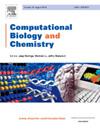结合抗利尿激素相关基因鉴定不同肺腺癌亚型,并建立预测预后和指导免疫治疗的相关指标
IF 2.6
4区 生物学
Q2 BIOLOGY
引用次数: 0
摘要
肺腺癌(LUAD)是最具侵袭性和快速致死性的肿瘤类型之一。先前的研究已经证明抗利尿激素(ADH)相关基因与癌症有关。然而,adh相关基因在LUAD中的作用尚不清楚。因此,研究这些基因在LUAD中的特征是必要的。方法利用STRING数据库对LUAD患者ADH相关差异表达基因(DEGs)进行鉴定。进行共识聚类,并为亚型之间的deg构建蛋白-蛋白相互作用网络。从PPI网络中提取的基因进行了单变量、LASSO和多变量Cox回归分析,以建立LUAD的预测模型。综合临床数据和风险评分,创建一个nomogram,并评估其对LUAD患者总生存期(OS)的预后能力。此外,还分析了LUAD患者的靶向治疗、免疫景观、功能富集和突变谱。最后,采用qRT-PCR检测LUAD细胞中特征基因的表达。结果根据adh相关的deg, LUAD患者被分为两组(第1组和第2组),生存结果不同。随后,利用这两个亚型的deg构建了包含9个特征基因的预测模型。受试者工作特征曲线表明该模型预测LUAD患者OS的预后准确性。与高危组相比,低危组患者免疫浸润水平和免疫表型评分较高,肿瘤免疫功能障碍和排斥评分较低。富集分析显示,免疫反应途径和配体-受体相互作用是区分高危组和低危组的主要功能类别。低危组的基因突变负担明显降低。药物敏感性分析确定了几种可能作用于中枢基因的潜在靶向疗法,包括Dabrafenib、ARQ-680、Vemurafenib、BGB-283、MLN-2480和GDC-0994。qRT-PCR验证肿瘤组织中DNAH12显著下调,DKK1、DLX2、IGFBP1、NTSR1、RPE65、VGF显著上调。结论本研究为LUAD患者提供了潜在的预后生物标志物,并可能促进LUAD患者有效免疫治疗策略的发展。本文章由计算机程序翻译,如有差异,请以英文原文为准。
Identification of different lung adenocarcinoma subtypes in combination with antidiuretic hormone-related genes and creation of an associated index to predict prognosis and guide immunotherapy
Background
Lung adenocarcinoma (LUAD) is one of the most aggressive and rapidly lethal tumor types. Previous studies have demonstrated the involvement of antidiuretic hormone (ADH)-related genes in cancer. However, the role of ADH-related genes in LUAD remains unclear. Therefore, investigating the characteristics of these genes in LUAD is essential.
Methods
Differentially expressed genes (DEGs) associated with ADH in LUAD were identified using the STRING database. Consensus clustering was performed, and a protein-protein interaction network was constructed for the DEGs between subtypes. Genes extracted from the PPI network underwent univariate, LASSO, and multivariate Cox regression analyses to develop a predictive model for LUAD. A nomogram integrating clinical data and risk scores was created, and its prognostic power for overall survival (OS) in LUAD patients was evaluated. Additionally, LUAD patients were analyzed for targeted therapies, immune landscape, functional enrichment, and mutation profiles. Finally, qRT-PCR was used to examine the expression of signature genes in LUAD cells.
Results
Based on ADH-related DEGs, LUAD patients were stratified into two clusters (Cluster 1 and Cluster 2) with distinct survival outcomes. A predictive model incorporating nine feature genes was subsequently constructed using DEGs from these two subtypes. The receiver operating characteristic curve demonstrated the model’s prognostic accuracy in predicting OS in LUAD patients. Compared to the high-risk group, patients in the low-risk group exhibited higher immune infiltration levels and immunophenoscore, along with lower tumor immune dysfunction and exclusion scores. Enrichment analysis revealed that immune response pathways and ligand-receptor interactions were the primary functional categories distinguishing the high- and low-risk groups. The low-risk group showed a significantly lower gene mutation burden. Drug sensitivity analysis identified several potential targeted therapies, including Dabrafenib, ARQ-680, Vemurafenib, BGB-283, MLN-2480, and GDC-0994, which might act on hub genes. qRT-PCR validation confirmed that DNAH12 was significantly downregulated in tumor tissues, while DKK1, DLX2, IGFBP1, NTSR1, RPE65, and VGF were markedly upregulated.
Conclusion
This study provided potential prognostic biomarkers for LUAD and might facilitate the development of effective immunotherapy strategies for LUAD patients.
求助全文
通过发布文献求助,成功后即可免费获取论文全文。
去求助
来源期刊

Computational Biology and Chemistry
生物-计算机:跨学科应用
CiteScore
6.10
自引率
3.20%
发文量
142
审稿时长
24 days
期刊介绍:
Computational Biology and Chemistry publishes original research papers and review articles in all areas of computational life sciences. High quality research contributions with a major computational component in the areas of nucleic acid and protein sequence research, molecular evolution, molecular genetics (functional genomics and proteomics), theory and practice of either biology-specific or chemical-biology-specific modeling, and structural biology of nucleic acids and proteins are particularly welcome. Exceptionally high quality research work in bioinformatics, systems biology, ecology, computational pharmacology, metabolism, biomedical engineering, epidemiology, and statistical genetics will also be considered.
Given their inherent uncertainty, protein modeling and molecular docking studies should be thoroughly validated. In the absence of experimental results for validation, the use of molecular dynamics simulations along with detailed free energy calculations, for example, should be used as complementary techniques to support the major conclusions. Submissions of premature modeling exercises without additional biological insights will not be considered.
Review articles will generally be commissioned by the editors and should not be submitted to the journal without explicit invitation. However prospective authors are welcome to send a brief (one to three pages) synopsis, which will be evaluated by the editors.
 求助内容:
求助内容: 应助结果提醒方式:
应助结果提醒方式:


